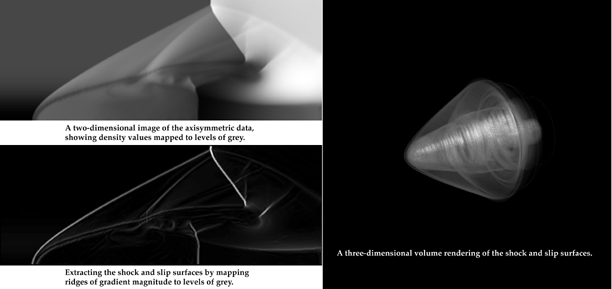
Researchers at ICASE have been developing numerical methods for studying the
interaction of a shock with a longitudinal vortex
(Erlebacher, Hussaini and Chu, ICASE report no. 96-31.)
Although the data is axisymmetric and can be fully represented in two
dimensions, a 3D rendering of the surfaces of interest provides a complementary
means of portraying the data and may facilitate appreciation of certain aspects
of the spatial geometry. I use a 2D ridge finding algorithm on the 2D flow
density data to determine the 'feature lines' defining the shock and slip
surfaces, and then use the symmetry information to generate the 3D volume
rendered image.

